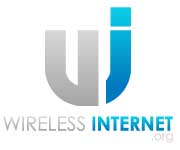WiMAX - Making Everywhere a Hotspot
Imagine a wireless internet system with a speed of a broad band service but with a broad coverage like a cell phone. Think of a whole country turning into a hotspot, where people don't have to cram in a small coffee shop, making wireless internet accessible from every side of the country. If you have done that, you have just peeked into the potentials of WiMAX.
What is WiMAX?
WiMAX or Worldwide Interoperability for Microwave Access, known also as IEEE 802.16, is a telecommunications technology that enables data transmission with broadband speeds and wide coverage without a need for physical connection. WiMAX enables:
- Wireless portable/mobile broadband connectivity.
- Wide cell phone like coverage
- Wireless alternative for cable and DSL last mile broadband access.
- Wireless broadband connection that does not require line-of-sight connection between subscriber and base station.
What is the difference between WiMAX and WiFi?
Distinguishable difference between WiFi and WiMAX are speed and coverage area. Look at the comparison below.
| Wimax | Wifi | |
| Speed | Up to 4Mbps | Up to 2Mbps |
| Bandwidth | Up to 75Mbps | Up to 54Mbps |
| Range | 30 miles (50 km) | 100 feet (30 m) |
| Intended Number of Users | 100+ | 20 |
| Quality of Service | Weaker encryption (WEP or WPP) | Stronger encryption (TDES or AES) |
On the technical side, moreover, WiMAX operates on licensed spectrum where frequencies are exclusively allocated to the carriers. Thus, the operators will be able to emit more power without fear of interference. While WiFI, on the other hand, operates on unlicensed spectrum posing the possibility of interfere with other devices. Reportedly, baby monitors and microwave ovens had caused signal overlapping with WiFI.
How fast is WiMAX compare to current broadband technologies?
Typical WiMAX speed is very competitive compared to prevalent broadband technologies. Considering that most of those technologies are wired, requiring additional cables for operation, WiMAX capabilities show flexibility and velocity at the same time. Consider the following comparison of WiMAX internet with existing and upcoming broadband technologies;
| Technology | Speed |
| WiMAX | 3Mbps |
| Cable broadband | 4.5 Mbps |
| Wild Blue | 500 Kbps |
| DSL speed | 768 Kbps |
| ViaSat-1 | 2 Mbps |
Can WiMAX offer mobile functions?
Yes. Approved in late 2005, the fixed WiMAX 802.16d have now a mobile extension, IEEE 802.16e, optimized for mobile applications. This new standard adds features to WiMAX to support wireless connectivity for moving clients, thus enabling subscribers to access the internet with high speed while in motion. With this standard, devices with built-in mobile WiMAX cards would be able to maintain broadband connection even when they are in the train or a car.
Who offers WiMAX Services? How much does it cost?
In the US, WiMAX broadband for residential and business services are currently offered by the MetroBridge Networks, Towerstream, Valtech Communications, Clearwire, Sprint Nextel, NextWave Wireless, Open Range, Conterra, Open Range Communications, Conterra, RazzoLink, DigitalBridge, Nth Air, NextPhase Wireless ,Rapid Systems, Sling Broadband and Rainbow Broadband in limited areas. WiMAX costs starts from $29 a month for residential and $300 for business plans.
What is the future for WiMAX?
Once widespread, WiMAX can prove its ability to cover a whole city or even a whole country. Undeveloped nations, for example those who cannot still afford nationwide cable infrastructure, would benefit hugely through WiMAX because cable construction is waived. Moreover, the reduced cost and increased coverage would allow financially challenged people to afford internet connection where ever they are. Business oriented people on the other hand would benefit as much, as the mobile broadband service would increase opportunity and stimulation, bringing the internet wherever they are.
